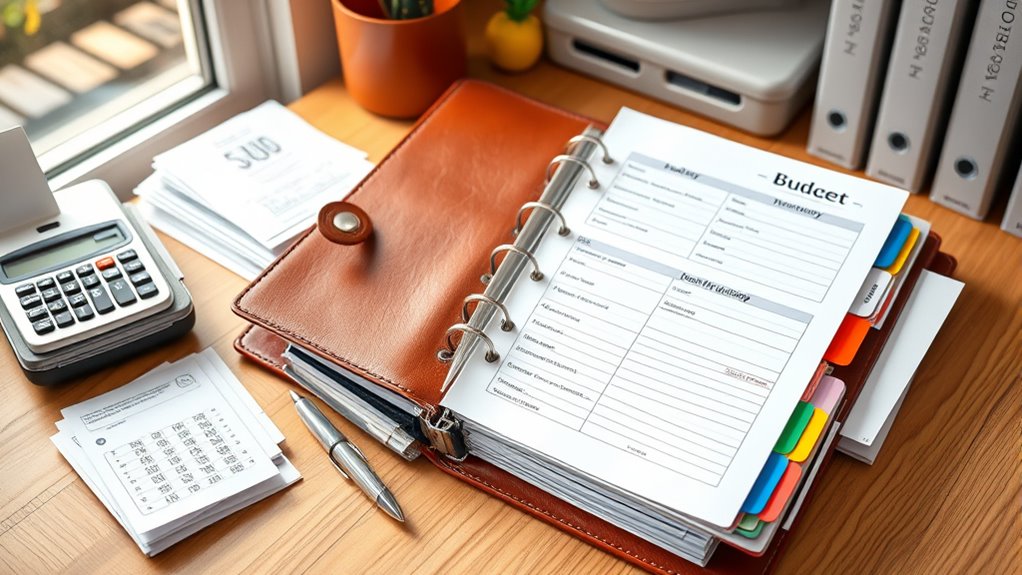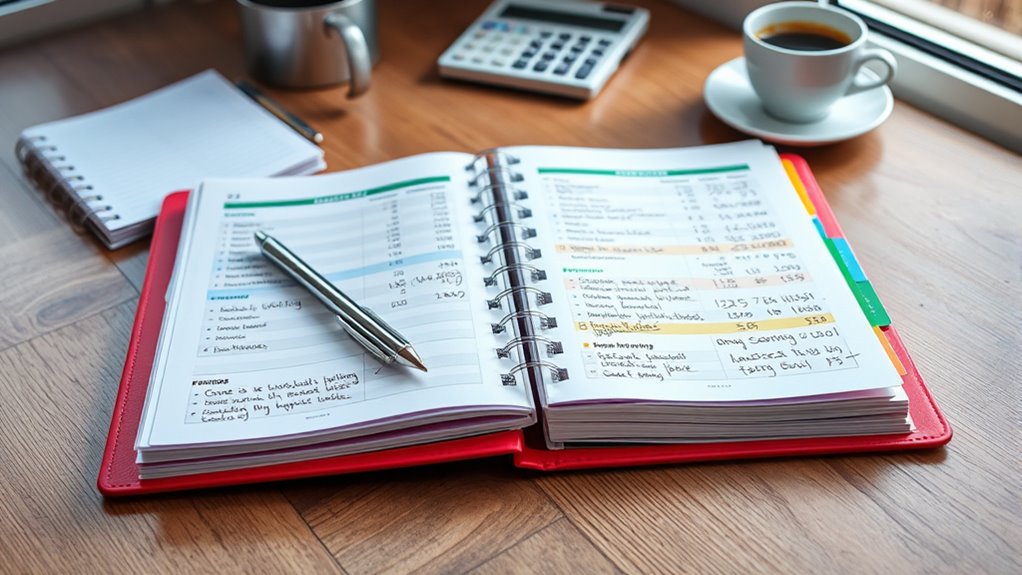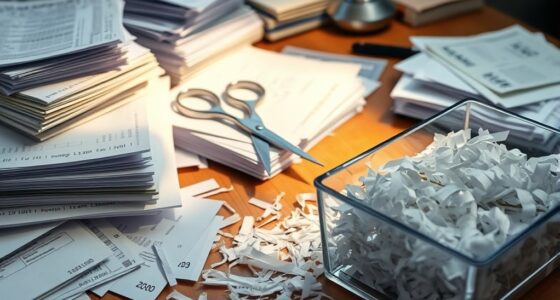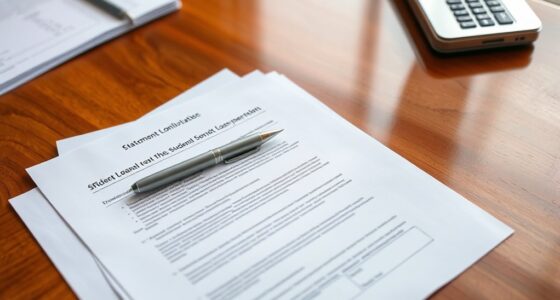To create a budget binder, start by identifying your key expense categories like rent, groceries, and savings, then assign realistic budgets for each. Label envelopes clearly and fill them with cash or use small containers for organization. Track your spending and update records regularly to stay on target. Adjust your categories as needed to reflect changes in your financial situation. Keep exploring how this simple system can help you develop better money habits and gain control over your finances.
Key Takeaways
- Identify your expense categories and set realistic budgets based on income and past spending habits.
- Label envelopes clearly for each category and fill them with designated cash amounts.
- Keep detailed records of budgets and actual expenses, using receipts to track spending accurately.
- Regularly review and adjust your envelope amounts as your financial situation or goals change.
- Use the binder as a visual, tangible tool to promote mindful spending and improve financial awareness.

A budget binder is a powerful tool that helps you stay organized and in control of your finances. It serves as a centralized place where you can track your income, monitor your spending, and plan for future expenses. One effective way to manage your money within your budget binder is by using the envelope system. This method involves dividing cash into labeled envelopes based on different expense categories, such as groceries, transportation, entertainment, and savings. By allocating a specific amount of money to each envelope, you create a visual and tangible way to stay within your budget. When you need to make a purchase, you simply use the cash from the corresponding envelope, which helps prevent overspending and encourages discipline.
To set this system up, first, identify your expense categories. These categories should reflect your actual spending habits and financial goals. Common categories include rent or mortgage, utilities, groceries, dining out, transportation, insurance, entertainment, and savings. Assign a realistic budget amount to each category based on your income and past spending. Once you’ve established these amounts, gather envelopes or small containers and label them clearly with each expense category. Fill each envelope with the designated cash amount, and keep a record of your budgets and actual expenses in your budget binder. This makes it easy to see at a glance where your money is going and if you need to adjust your spending. Additionally, incorporating financial literacy into your routine can help you make more informed budgeting decisions.
The beauty of the envelope system within your budget binder is that it forces you to be intentional with your money. When you see how much you’ve allocated for each expense, you become more mindful of your spending habits. If you notice that you’re consistently overspending in a particular category, you can re-evaluate and adjust your budget accordingly. Your expense categories should be flexible; as your financial situation changes, so should your budgets. Keep track of receipts and update your records regularly to stay current with your spending. This habit not only keeps you organized but also provides valuable insights into your financial health.
Incorporating the envelope system into your budget binder creates a simple, effective way to manage your money. It transforms abstract numbers into tangible cash, making it easier to stick to your financial goals and avoid unnecessary debt. By carefully planning your expense categories and using envelopes to control spending, you set yourself up for greater financial stability and peace of mind. With consistency, your budget binder becomes an indispensable tool that empowers you to spend wisely and save more efficiently.
Frequently Asked Questions
How Often Should I Update My Budget Binder?
You should update your budget binder regularly, ideally once a month, to stay on top of your finances. During a financial review, you can assess your spending, income, and savings. This is also a good time to adjust categories if your expenses or goals change. Consistent updates help you maintain control and guarantee your budget reflects your current financial situation, making it easier to reach your goals.
What Materials Are Best for Durable Budget Binders?
Your budget binder is your financial fortress—so it needs to last forever! When choosing binding materials, opt for sturdy options like hardcover binders, which offer unmatched durability, or metal rings that withstand daily wear and tear. Consider durability considerations like water resistance and reinforced edges, especially if you carry it everywhere. These materials guarantee your budget binder remains intact, helping you stay organized without worry.
Can a Digital Budget Binder Be Effective?
A digital budget binder can be very effective if you prefer digital tools over paper. It offers easy access, quick updates, and seamless organization, making tracking your finances simpler. While paper binders provide tangible records, electronic options save space and reduce clutter. Choose based on your style—if you’re tech-savvy, a digital budget binder might just be more efficient and convenient for managing your budget.
How Do I Organize Receipts in My Binder?
Think of your receipts like tiny treasures waiting to be sorted. To keep things tidy, dedicate sections in your binder for different categories. Use clear binder labeling to easily identify each section, making receipt sorting a breeze. Regularly file your receipts, ensuring important ones stay accessible. This organized approach helps you track expenses efficiently and simplifies any future need for reference or tax time.
What Common Mistakes Should I Avoid When Creating a Budget Binder?
When creating a budget binder, avoid common mistakes like neglecting to track expenses consistently or setting unrealistic financial goals. You might also overlook updating your budget regularly, which can lead to inaccuracies. Don’t forget to categorize your expenses clearly and review your progress often. By staying disciplined and organized, you’ll keep your finances on track, making it easier to achieve your financial goals and maintain a clear overview of your spending.
Conclusion
Your budget binder isn’t just a folder—it’s the anchor holding your financial ship steady amid life’s storms. Each carefully organized section is like a lighthouse guiding you through uncertain waters, illuminating your goals and fears alike. By maintaining this symbol of control, you’re not just managing money; you’re steering your future with confidence. Keep your binder close, and let it remind you that even small steps can lead to a brighter, more secure horizon.









